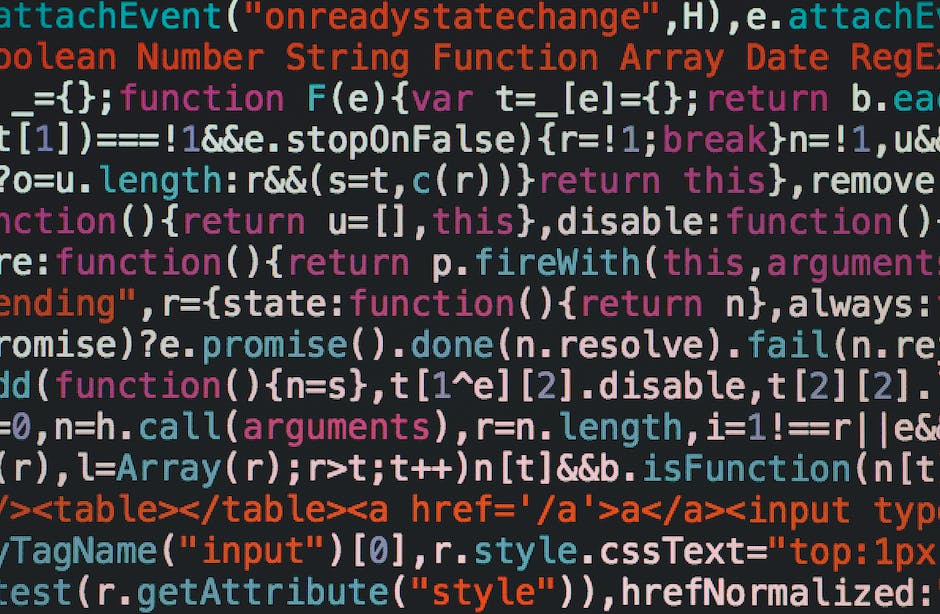Have you ever wondered how information is transformed and utilized in the digital world? The answer lies in data processing. Data processing is a series of actions that take raw data and convert it into a more usable form. It plays a crucial role in how we analyze, interpret, and make decisions based on information. In today’s technologically advanced world, data processing has become a cornerstone in several sectors, including healthcare, finance, education, and more. It helps companies to gather insights, make informed decisions, and strategize their next moves.
Data processing is like the brain of a digital system, taking in raw information, processing it, and producing output that can be used for various purposes. It is a complex process, but understanding it can help us appreciate the power of data in shaping our world.
Let’s take a closer look at the intricacies of data processing and its importance in our lives.

The Evolution of Data Processing
Data processing has a rich history that spans centuries. Originally, data processing was a manual task, with individuals sifting through information and organizing it into understandable formats. However, with the advent of the digital age, data processing has undergone a significant transformation.
The introduction of computers and software revolutionized data processing, enabling us to process vast amounts of data quickly and accurately. Today, state-of-the-art techniques, such as machine learning and artificial intelligence, have taken data processing to a whole new level, allowing us to extract even more meaning and value from our data.
Basic Elements of Data Processing
The process of data processing can be broken down into three primary stages: input, process, and output. Let’s examine each stage in detail.
The input stage involves collecting raw data from various sources. This could be anything from user data collected from a website to financial data gathered from a company’s transactions. The goal is to gather as much relevant information as possible to feed into the next stage.
The process stage is where the magic happens. Using various algorithms and techniques, the raw data is transformed into a more usable form. This could involve cleaning the data, sorting it, analyzing it, or applying statistical methods to uncover patterns and trends.
The output stage is the final step in the data processing cycle. Here, the processed data is presented in a way that can be easily understood and acted upon. This could be in the form of a visual data representation, such as a graph or chart, or a detailed report outlining key findings.
The beauty of data processing lies in its ability to take raw, unstructured data and transform it into valuable insights. It’s a testament to the power of data and how it can be used to inform and drive decision-making.
Different Types of Data Processing
Now that we have a basic understanding of data processing, let’s explore the different methods associated with it. Each method has its own unique characteristics, use cases, and applications. The primary types we will be discussing include batch processing, real-time processing, online processing, distributed processing, and multiprocessing.
Batch Processing
Have you ever wondered how banks process thousands of transactions overnight? The answer lies in the concept of batch processing. Batch processing is a method of data processing where similar data are grouped together and processed as a batch. This type of processing is highly efficient when dealing with large volumes of data that don’t require immediate processing. However, it does have its drawbacks. The delay between data collection and processing can be a significant disadvantage in scenarios where real-time data analysis is required.
Real-Time Processing
Let’s shift gears and look at real-time processing. Real-time processing is the polar opposite of batch processing. As the name suggests, data in real-time processing is processed instantly as it is received. Think about your social media feeds – they are updated in real-time as new posts are created. Real-time processing allows for immediate response and decision-making based on the processed data. However, it can be resource-intensive and may not be suitable for all scenarios.
The Role of Data Processing in Technology
Data processing plays a crucial role in the field of technology. Let’s take a look at some examples. In software development, data processing is used to analyze user behavior, improve performance, and debug issues. In fields like Artificial Intelligence and Machine Learning, data processing is used to clean and prepare data for training models. In data science, it is used for exploratory data analysis, feature engineering, and predictive modeling.
Whether we realize it or not, data processing is an integral part of our technologically driven lives. It fuels our digital world, and as we continue to generate more data, the importance of efficient and effective data processing will only continue to grow.
Careers in Data Processing
So, you’re interested in a career that involves data processing? You’re in luck! The field is vast and offers a range of exciting roles. Let’s explore some of the career paths available.
A data scientist is one such role. These individuals use their analytical, statistical, and programming skills to collect, analyze, and interpret complex datasets. They also use these datasets to solve problems and make strategic decisions. In terms of skills, they typically require knowledge in languages such as Python or R, a good understanding of machine learning techniques, and a knack for statistical analysis. As for their earning potential, it’s pretty impressive, with an average salary range of $95,000 to $165,000, depending on experience and location.
Next, we have data analysts. They play a pivotal role in interpreting data, analyzing results using statistical techniques, and providing ongoing reports. They might also develop and implement databases and data collection systems. Their required skills include proficiency in Excel, SQL, and perhaps even some programming knowledge. They can expect to earn between $60,000 and $85,000 on average.
Then there are database administrators. These tech-savvy professionals are responsible for storing, organizing, and securing a company’s data. They also ensure that data is available to the users who need it and that systems are running smoothly. The typical salary range for database administrators is between $75,000 and $120,000.
Learning Resources for Data Processing
If you’re eager to learn more about data processing, there are plenty of resources available. But where should you start? Let’s look at some of the best resources out there.
For books, “Data Science for Business” by Foster Provost and Tom Fawcett is a great starting point. It introduces the fundamental principles of data science and guides you on how to apply these concepts in business. “Big Data: A Revolution That Will Transform How We Live, Work, and Think” by Viktor Mayer-Schönberger and Kenneth Cukier is also highly recommended for those interested in understanding the impacts of data processing in our society.
If you prefer online courses, Coursera offers “Data Science and Machine Learning Bootcamp with R” and “Python for Data Science and Machine Learning Bootcamp”. Both of these courses are comprehensive and beginner-friendly. edX also offers a professional certificate in Data Science from Harvard University, which covers fundamental concepts including R, probability, inference, and modeling, among others.
Webinars and websites can also provide quality content. Websites like DataCamp, Kaggle, and Towards Data Science offer a wealth of tutorials, articles, and challenges to help you improve your data processing skills.

Understanding Data Processing Systems
When we talk about data processing, it’s crucial to understand that at the heart of it all is the data processing system. But what exactly is it? In simple terms, a data processing system is a system that takes raw data and converts it into a more useful or understandable form. These systems are an integral part of many industries, from healthcare to finance, and are essential for making sense of large amounts of data.
There are several types of data processing systems, each with its unique functions and operations. For example, an online transaction processing system (OLTP) is commonly used in banking and retail industries. This system is designed to facilitate and manage transactional applications, such as data entry and retrieval transactions in large volumes and at high speed.
On the other hand, a batch processing system handles data in large batches and is often used when dealing with large amounts of data that don’t require immediate feedback. This type of system is commonly used for tasks like billing, payroll calculations, or statistical analyses.
While these systems may seem complex, their main function is to streamline and simplify data processing tasks, making it easier for businesses to make informed decisions based on their data.
Future of Data Processing
With the rapid pace of technological advancements, one might wonder, what’s next for data processing? As the volume of data we generate continues to grow, the need for efficient data processing methods becomes ever more critical.
One emerging trend is the increased use of machine learning and artificial intelligence in data processing. These technologies can help automate data processing tasks, making them faster and more efficient. Moreover, they can uncover patterns and insights in data that might not be evident through traditional processing methods.
Another trend is the rise of edge computing, which processes data closer to its source rather than in a centralized data-processing warehouse. This approach reduces latency and can improve the speed and efficiency of data processing, especially in IoT devices.
These trends hint at a future where data processing is faster, more efficient, and more insightful. However, exactly how these technologies will evolve and influence data processing remains to be seen.
Final Takeaways
In summary, data processing is a crucial component of our tech-driven world. It allows us to make sense of large amounts of data and use it to make informed decisions. From understanding data processing systems to exploring the future of data processing, we’ve covered a lot of ground in this blog post.
Whether you’re a tech professional looking to enhance your skills or a novice interested in the world of data, understanding data processing is essential. It’s an exciting field with many opportunities for those willing to learn and adapt. So, why not dive deeper into the world of data processing? The more you know, the better equipped you’ll be to navigate our data-driven world.
